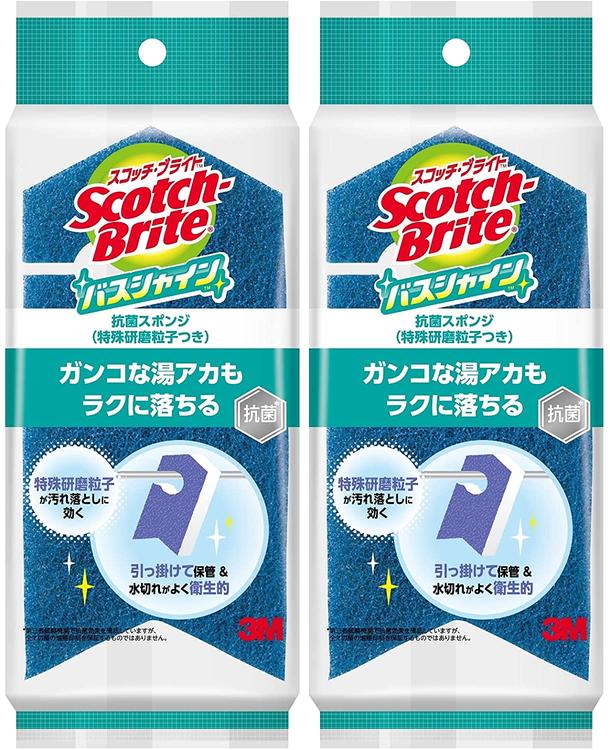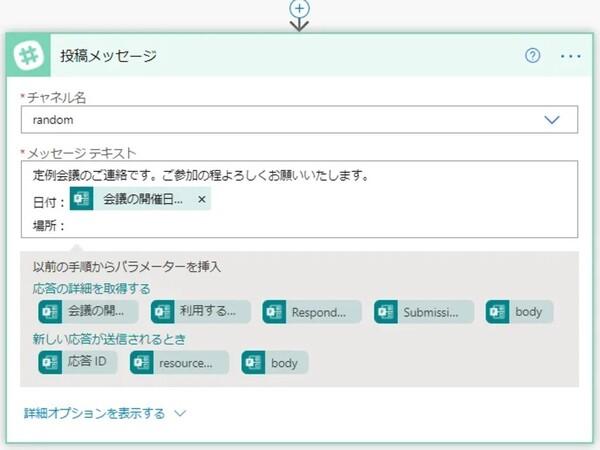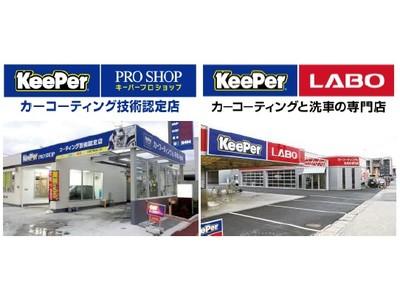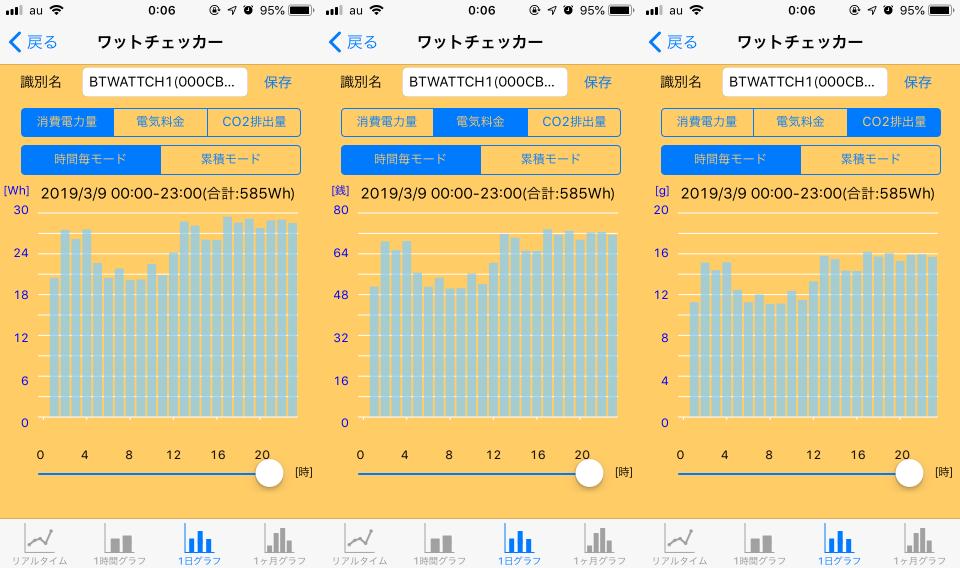Professional supervision! 11 detergents and goods recommended for cleaning the bath and preventing mold. Baking soda and citric acid
The bathroom is the perfect space to get rid of the fatigue and dirt of the day and refresh your body. It is also a place where mold and bacteria can easily grow, so daily maintenance is essential.
This time, we interviewed Mr. Takehiro Takahashi and Mr. Yuki Enomoto from Bridge Book House Cleaning about tips for cleaning bathrooms and countermeasures against mold. In addition to detergents and goods for cleaning the bath, we will also introduce how to use baking soda and citric acid.
Yuki Enomoto (left) & Takehiro Takahashi (right) opened “Bridge Book House Cleaning” with two childhood friends from elementary school. Her strengths are the enthusiasm and physical strength unique to her 20s, and she supports families who work hard at work, housework, and childcare by paying attention to greetings, manners, and politeness. The motto is "Remove dirt thoroughly with cleaning goods that are friendly to people and the environment."
■ ContentsPrevent dirt and mold! What are the measures that professionals also practice?
8 types of bath stains! What detergent do you need?
[Quick reference] 8 cleaning areas and recommended cleaning goods
11 selections of detergents and goods necessary for cleaning the bath and preventing mold
I want to know, what is the use of baking soda and citric acid?
5 NGs for cleaning the bath! professional advice
Prevent dirt and mold! What are the measures that professionals also practice?
In the bath, there are soap scum, water scale, sebum stains, mold, and even a type of fungus commonly known as "pink stain" that occurs on the floor.
Bathrooms are poorly ventilated and tend to have high humidity and temperature. The longer you don't clean, the more types of dirt you have, and the more difficult it is to clean. To prevent this from happening, daily care is important. First of all, I will introduce two recommended preventive measures that professionals also practice.
Rinse the entire bathroom with a shower after taking a bath, scrub the areas of concern with a sponge, etc., and then use a squeegee or a highly absorbent microfiber cloth to wipe off the moisture. It can be a little cumbersome due to its large area, but it's the quickest way to make cleaning easier later.
It is recommended that you do not miss daily maintenance, especially in areas where mold and slime are likely to occur, such as drains and shampoo basins.
Molds die in just a few seconds of exposure to heat above 50 degrees Celsius. Once a week, pour hot water at 60°C into the area of concern for about 5 seconds and it will effectively kill mold on the surface of the tiles and packing. Apply hot water for about 20 seconds to areas where you think mold has grown to the inside.
I will explain this in detail later, but please be aware that showering the bathroom with water after taking a bath is counterproductive against mold.
8 types of bath stains! What detergent do you need?
Image: Shutterstock
Once you understand the types of dirt you see in your bathroom and what causes it, you can learn cleaning tips and preventive measures. First of all, let's understand the type of detergent first.
There are three main types of detergents. "Alkaline/weakly alkaline", "neutral", and "acidic/weakly acidic" each have their own types of dirt.
The basics of cleaning are to "neutralize" dirt and make it easier to remove. "Alkaline" detergents are good at neutralizing acidic stains, while "acidic" detergents are strong against alkaline stains.
Neutral detergents such as dishwashing detergent neutralize both alkaline and acidic stains. You can check which three it belongs to on the back of the product.
We have summarized the 8 typical stains that occur in the bathroom and the necessary detergent. Simple stains can be removed with a neutral detergent such as Utamaro Cleaner, but if that doesn't work, use the detergents listed below.・1~4
| Type of dirt | What kind of dirt? | Detergent Required | |
|---|---|---|---|
| 1 | Soap scum | When the soap and shampoo used to wash your body and hair react with the metal components such as calcium and magnesium contained in tap water, a “whitish” is produced. "It looks like soap scum. On the other hand, the sebum stains on the body react with the oils and fats in shampoos and soaps, resulting in dark soap scum. | Acid detergent, citric acid, etc. |
| Alkaline detergent, baking soda, sodium sesquicarbonate, etc. | |||
| 2 | Water scale | Water scale is formed when the calcium and magnesium contained in tap water solidify. It is commonly found around bathroom faucets and mirrors. It becomes difficult to remove over time, so daily care is recommended. | Acid detergent, citric acid, etc. |
| 3 | Hot water scale | Hot water scale is characterized by being rough to the touch, and is one of the stains that tends to occur in the bathtub. | Alkaline detergent, baking soda/sodium sesquicarbonate |
| 4 | Pink dirt< /b> | Have you ever seen pink stains on your floors, drains or shampoo bowls? The dirt commonly known as "pink dirt" is a kind of yeast called "Rhodotorula". Due to its high fertility, it is a troublesome stain that will spread if left alone. | Alkaline chlorine bleach, mold killer, mold highter, baking soda |
・5~8
| 5 | Sebum stains | Sebum from the body and scalp It's the dirt that sticks to drains and walls. Since the dirt flows down from the body, it is also characterized by being difficult to stick to higher positions than people. | Alkaline detergent, baking soda, sodium sesquicarbonate, etc. |
| 6 | < td>Black moldOne of the most common places in the house for mold to grow is the bathroom. The reason for this is that the humidity and temperature are high, and the conditions are perfect for the growth of mold, such as water droplets, sebum, and redness. | Alkaline chlorine bleach, Kabi killer, Kabihiter | |
| 7 | < td>HairIt is said that more than 60 strands of hair fall out on average per day, and most of them are concentrated during hair washing. Many people use stainless steel or paper type catchers. When it mixes with soap scum and sebum, it creates a sludge-like slime and is also the cause of bad odors. It is important to remove it frequently, but if sliminess occurs, clean it with an alkaline detergent. | Alkaline detergent, baking soda/sodium sesquicarbonate | |
| 8 | Dust | Dust tends to accumulate in the vents and sashes of the bathroom door. If dust accumulates, even if you turn the ventilation fan with great pains, the effect will be halved, so let's remove it. | Remove with a brush |
[Quick reference] 8 cleaning areas and recommended cleaning products
Next, the bathroom Divided into 8 cleaning areas, we will explain the stains that are likely to occur and the necessary detergents and cleaning goods.
First and foremost, ensure thorough ventilation. Start by opening the windows and turning on the ventilation fan 24 hours a day. When cleaning, lightly flush the entire bathroom with water to clean the bathtub, scrub the walls and floor with a sponge, and finally clean the drain.
So far, I have introduced the types of dirt in the bath and the tips for cleaning.
As mentioned above, it is okay to wipe off the water with a squeegee or highly absorbent towel for daily care, but you can also use it "once a week", "once a month", "once in six months", etc. A thorough cleaning will be required.
I made a list of stains that are likely to occur by location, how often you should clean them thoroughly, and recommended detergents.
・1~4
| Location of dirt | Type of dirt | FirmlyCleaning | TypicalRecommended cleaning goods | |
|---|---|---|---|---|
| 1 | Bathtub/lid | Soap scum, water scale, hot water scale, sebum stains, mold | Once a week | ・Utamaro cleaner, citric acid, baking soda, sesqui, etc. ・Sponge |
| 2 | Floor/Wall/Door | Mold, soap scum, water scale, hot water scale, pink dirt, dust | once a week | ・Utamaro cleaner, citric acid, baking soda, sesqui, mold-hiter, etc. ・Sponge, brush |
| 3 | Chair and bucket/shampoo Base | Soap scum, sebum stains, mold, pink stains | Once a week | ・Utamaro cleaner, baking soda, sesqui, mold-hiter, etc.・Sponge |
| 4 | Mirror | Water spot | Once a week | ・Citric acid・Diamond scale removal |
・5~8
| 5 | Drain | Hair, sebum, soap scum, mold | Month 1 time | ・Kabihiter, Utamaro Cleaner, Baking Soda, Sesqui Sponge |
| 6 | Ceiling /Ventilation fan | Mold, dust | Once a month to once every three months | ・Utamaro cleaner・Floor wiper, Bathbon-kun, brush, cleaning Machine |
| 7 | Reheating piping | Hot water scale, sebum stains, pink stains | td>Once a year | ・Utamaro cleaner, baking soda, sesqui, mold-hiter, scrubbing bubble, bathtub cleaner Java, etc. |
| < b>8 | Entire bathroom | Mold | Once every six months | Anti-mold fumigation, etc.< /td> |
Tips for cleaning: Bathtub If you notice, you may have experienced black spots due to water scale or mold, or black mold growing on the lid of the bathtub.
To prevent this from happening, it is a good idea to clean once a week with a neutral detergent such as Utamaro Cleaner and a sponge. For stains that cannot be removed with a neutral detergent, use a weakly alkaline detergent such as sodium sesquicarbonate or baking soda. Alkaline chlorine bleach is recommended for black mold.
Types of dirt: Black mold, soap scum, water scale, pink dirt, dust It is a place where mold easily adheres and mold easily occurs. For simple stains, use Utamaro Cleaner to clean the floor with a brush. If stains still persist, use sodium sesquicarbonate, baking soda, or citric acid.Clean walls and doors with a citric acid spray. Stubborn stains can be cleaned by using abrasives such as baking soda. Don't forget to use citric acid spray on the door to clean the rails and gaskets.
Types of dirt: Soap scum, sebum stains, mold, pink stainsCleaning tips: Sebum stains, soap scum, and water scale stick to chairs and buckets Or, in severe cases, mold may stick to it.
It can be washed off with a neutral detergent and a sponge, but since the chair has a complicated shape, we recommend soaking it in baking soda or oxyclean. The same is true for shampoo stands, especially under shampoo and conditioner bottles, as slime tends to accumulate, so be careful.
Type of Dirt: Water ScaleTips for Cleaning: Water scale like white scales adhering to the mirror is stubborn and difficult to remove.

The cause of this is minerals such as calcium, silicon, and magnesium contained in tap water, and these can be easily removed at once by using an acidic detergent such as citric acid. However, it is necessary to be careful as anti-fogging (hydrophilic) mirrors may be scratched.
It is also recommended to use an item dedicated to removing scales.
Dirt types: Hair, sebum stains, soap scum, black moldCleaning tips:It is said that an average person loses about 68 hairs per day. Many of them are concentrated when washing hair. Hair accumulated in the drain easily attracts other dirt, and if left unattended, the drain will only get dirty.
It's best to have a hair catcher, but make sure to clean the hair catcher as well. If you see slimy or clogged drains, it is best to clean them thoroughly with a mold killer, a fungicide for drains, or a pipe cleaner. Baking soda and sodium sesquicarbonate are also effective for removing soap scum.
Dirt type: Black mold, dustCleaning tips: Bathroom ceilings and ventilation fans are places that are difficult to clean, but if left unattended, mold will grow. It's easy and collects a lot of dust.
For the ceiling, soak a floor wiper in a neutral detergent for the bathroom and press it against the dirt to wipe it off. Finally, take a shower or wipe with water, and wipe off the moisture with a dry sheet. Use a vacuum cleaner to remove dirt from the filter of the ventilation fan, wash it with a neutral detergent, and wipe the cover clean with a damp cloth.
Types of dirt: Hot water scale, sebum, bacteria So, dirt will gradually adhere to it. Clean it once a year.First, remove the filter from the circulation port and fill the water up to the top of the circulation port. Then, dissolve sodium percarbonate such as Java in hot water, reheat it, and spread it around the pipes. After soaking for about 1 hour, remove the hot water, boil again and rinse thoroughly. It can eliminate bacteria such as coliforms and staphylococci.
Dirt type: Black moldTips for cleaning: Once mold occurs, it is difficult to remove it cleanly. In addition to the daily maintenance mentioned above, use an anti-mold fumigator once a year to prevent the growth of black mold.
11 selections of detergents and goods necessary for cleaning the bath and preventing mold
Next, 10 selections of goods and detergents that you should prepare for actually cleaning the bath "Bath Cleaning We introduce them by categorizing them into basic goods that can be used in general, detergents and cleaners that are indispensable for cleaning the bath, and items that prevent stains in the bath recommended for daily care.
Don't forget to wear a mask when using chlorine bleach, although it's not on the list.
Uses General bath cleaningWhen cleaning the bath, you often use strong detergents, so it is especially necessary to wear gloves if you have sensitive skin. Especially thick gloves.
“Bathroom Gloves M MarigoldM” has a surface treatment, so it is resistant to bleach and mold removers, and the fabric is thick and highly durable. It is recommended to bend the wrist part about 5 cm and wear it to prevent dripping water from entering.
Where to use General bathroom cleaning"3M Japan Scotch Bright" is easy to wash because it is a 3-layer non-woven fabric on both sides, and it is hard to scratch because it uses special abrasive particles.
Long lasting and economical. It is also processed so that it can be hung on a rack or towel bar, so it is easy to drain and dry. It is also antibacterial, so it is also a point to keep it clean at all times.
Where to use Walls, ceilings, corners of ceilings and walls, etc."Unit Basbon-kun", which is characterized by its fluffy fur, is a useful item that uses only water to remove dirt and slime thanks to its mesh-like fibers. Since it is a telescopic type that extends up to 73 cm, you can quickly clean ceilings that you cannot reach in 5 minutes.
If you use a neutral detergent, the detergency will be improved. It dries quickly and has been treated with antibacterial treatment, making it a perfect item for cleaning the bath.
[I tried it] Easy to clean hard-to-reach ceilings!Left photo: When you actually try the unit Basbon-kun, you will be surprised at how fluffy the head is. You can see that Basbon-kun's fluffy hair has reached the ceiling and ventilation fan parts that are hard to reach. It is recommended to remove the dust when the bath bon is dry, then wet it and finish it. Photo right: Even though it is soft, each piece is solidly made. Even if the shape is complicated, such as the drain port with mesh structure and the uneven part that opens and closes the window, the fiber hits firmly and removes the dirt.
Cleaning place: mirrorThere are many people who find it difficult to use the mirror in the bathroom because of the scales on it. Therefore, we recommend "Diamond Pad S". It is popular as an item that anyone can easily remove the scales from the mirror.
Light scales will be shiny in 5 to 10 minutes. If the stain is strong, put kitchen paper soaked in citric acid water on the mirror, leave it for about 3 hours, and then rub it with a diamond pad.
How to make citric acid water! Mix 1/2 teaspoon of citric acid with 100ml of water. Type of Detergent: Neutral Detergent Cleaning Location Entire BathroomUtamaro Cleaner is a highly reliable neutral detergent with high detergency. If you have one in your family, it will come in very handy. Mainly amino acid-based cleansing ingredients work to thoroughly remove stubborn water stains, hot water stains, and hand stains.
In addition, it is highly biodegradable and environmentally friendly. It is also resistant to oil stains, so it is also effective for stains around gas stoves. A versatile cleaner that can be used in a variety of situations.
Type of Detergent Mild Alkaline (Oxygen-Based Bleach) Areas to be Cleaned Floors, bathtubs, chairs and other small itemsOxygen-based bleach "Oxyclean" is good at removing acidic stains. It is famous for its "Oxyzuke," which makes it easier to remove stains on floors, bathtubs, chairs and tubs that cannot be removed with a neutral detergent.
Oxy pickling methodfloor
Bathtubs, lids, buckets, chairs, etc.
[I tried it]Left photo: Add 10 spoons of Oxyclean to the remaining water after bathing.
Photo right: Put in the bathtub lid, chair, and bucket. If you leave it as it is for about 5 hours ... .... It wasn't that bad of a stain, but without scrubbing it with a sponge, just washing it in the shower made the bathtub and fixtures shiny and shiny!
Type of Detergent Alkaline (chlorine bleach) Area to be cleaned Entire bathroomThe chlorine-based detergent "Strong Kabi Haiter" is effective in cleaning stubborn black mold in the bath. Chlorine-based cleaning agents are strong, so be sure to wear rubber gloves and use in a well-ventilated state when using them. Also, since harmful gas is generated, it is NG to use with acidic detergents.
[Tried] Remove black mold that was completely destroyed even with a scrubbing brush and a high pressure washer!Left photo: Stubborn black mold on the bathroom door that didn't come off even with a toothbrush, scrubber, or high pressure washer. When I was about to give up, I sprayed "Strong Kabi Haiter" and left it alone.
Wear a mask because the smell of chlorine is strong. Leave it for 40 minutes with the ventilation fan on.
Right picture: Although the dirt didn't come off completely, the effect is amazing just by spraying! ! Dirt was washed off before washing.
It is recommended to repeat the same process for persistent mold, so I will try again later.
Location of use Shampoo standIn order to keep the bath clean, it is important not to place anything on it. Just by devising not to put things on, cleaning will be a lot easier.
When water accumulates at the bottom of the shampoo bottle, water scale is generated, and the drips from the shampoo and conditioner become soap scum, which also accumulates slime. By using a bottle hook that can be installed on the wall of the bathroom, the contact points between the bottle and the bath are drastically reduced. It is highly effective in preventing stains.
Cleaning area: Entire bathroomIt is important not to leave water in the bathroom after taking a bath. Even if you just turn off the water on the walls and bathtub after taking a bath, the dirt will change unevenly.
The squeegee does not need to be squeezed like towels or rags, and can be easily drained. The size is also compact, and if you choose a type with a hook hole, it is recommended that you do not have to worry about where to put it.
Cleaning area: Entire bathroomThe "microfiber cloth" sold for washing cars is perfect for cleaning the bathroom. Fibers that are less than 1/100th the thickness of a human hair absorb dirt and moisture, making them more absorbent and quick-drying than rags.
As long as the dirt is not stubborn, water scale and hot water scale can be cleaned without detergent. The area around the faucet in the bathroom will be shiny with this one piece. Wiping off the water on the walls and floor of the bathroom after taking a bath will prevent dirt and sliminess.
Where to use DrainHair and sebum that accumulate in the drain can cause odors in the bathroom. To prevent odors in the bathroom, it is important to diligently throw away hair that has accumulated in the drain.
Daiso's hair catcher has a structure that collects hair and fine dust as it rolls with the water flow, and it is very easy to remove because it gathers in a ball-like shape. The collected hair is simply thrown into the trash can, so it is much easier to use than the sheet type or cloth type.
Where to use: The entire bathroom after cleaning"Look Antifungal Fumigation Agent" is a cleaning item that is recommended once a year to prevent mold in the bathroom. The smoke of the sterilization component "silver ion" spreads to every corner of the bathroom and sterilizes mold all at once. Since it removes every cause of mold, it also reduces the hassle of cleaning.
Continued use will increase the anti-mold effect of silver ions, and you will be able to keep it clean with just a simple cleaning. Small items such as toys and body towels can also be prevented from mold. It's also very easy to use.
What do you want to know about how to use baking soda and citric acid?
Baking soda, sodium sesquicarbonate, and citric acid, known as natural cleaners, are also recommended for cleaning the bath.
Baking soda is effective against sebum stains, black soap scum, hot water stains, and pink stains.
Put baking soda on a sponge to clean the floor, around the drain, the back of shampoo bottles and soap holders, etc., and soak the remaining water in the bathtub to soak fixtures such as chairs, basins, and bathtub lids. This is recommended as it removes the dirt at once.
Do not use baking soda on marble, painted surfaces (including lacquer, varnish, etc.), or aluminum products.
Citric acid, which is an acidic detergent, is effective against alkaline stains such as water scale and whitish soap scum.
It is recommended to use citric acid by dissolving it in water. It is recommended to soak kitchen paper with citric acid water and leave it for about 20 minutes.
If it's a mirror, rub it lightly with a sponge or diamond pad afterwards to make it shine. Do not use citric acid on rocks, natural wood, concrete, metals that rust easily such as iron and copper.
Five NGs for cleaning the bath! Advice from the Pros
Image: Shutterstock
It is sometimes said that it is better to pour water over the bathroom after taking a bath, but it actually has the opposite effect on mold. Moisture is what causes mold. Hot water is less likely to evaporate and become damp, and it also has a bactericidal effect, so it is effective in preventing mold. Pour a shower above 60 degrees throughout the bathroom once a week. It also prevents sliminess.
It is said that it is important to clean the bath from the waist down. You can clean the top of the ceiling and walls less frequently, but you should also clean areas below the waist, such as bathtubs, drains, and shampoo bowls. However, since dirt falls from top to bottom, it is recommended to clean from top to bottom.
Good ventilation is one step in keeping your bathroom clean. The best recommendation is to run the ventilation fan 24 hours.
What you want to be careful about when cleaning the bathroom is "scratches" to the bathroom. In addition to their appearance, scratches make it easier for dirt to adhere and cause mold. Walls and shampoo bowls are easily scratched, and rubbing them with a hard sponge can leave them scratched.
You also need to be careful with detergents. For example, mixing acidic and alkaline detergents is well known to generate toxic gas. Do not mix detergents labeled "Do not mix". Also, don't forget to ventilate the room and wear a mask when using chlorine-based detergents such as mold removers.
How was it? Even though it is called a bathroom, the cleaning methods and detergents used vary depending on the location. In addition to simple daily care, try cleaning with detergent regularly to maintain a clean environment all year round.
To list of articles by this writer
The "Kai Support" team delivers content that smartly supports your shopping. Home appliances, interior goods, cosmetics, skin care, outdoor goods, gadgets, and food. The professional of the road introduces the shortest distance to "really good thing".

![What is "thousand eyes" at night? [Techniques for listening to jazz - the road to becoming a jazz "professional listener" 126]](https://website-google-hk.oss-cn-hongkong.aliyuncs.com/drawing/article_results_9/2022/3/28/9b839a325eb3ad18a729c92cc52aa70b_0.jpeg)


![[EV's simple question ③] What is good for KWH, which represents the performance of the battery?What is the difference from AH?-WEB motor magazine](https://website-google-hk.oss-cn-hongkong.aliyuncs.com/drawing/article_results_9/2022/3/9/b2506c4670f9f2cb45ffa076613c6b7d_0.jpeg)
![[How cool is the 10,000 yen range?] 1st: The performance of the "robot vacuum cleaner with water wiping function (19800 yen)" like Rumba is ...](https://website-google-hk.oss-cn-hongkong.aliyuncs.com/drawing/article_results_9/2022/3/25/5251bb14105c2bfd254c68a1386b7047_0.jpeg)

